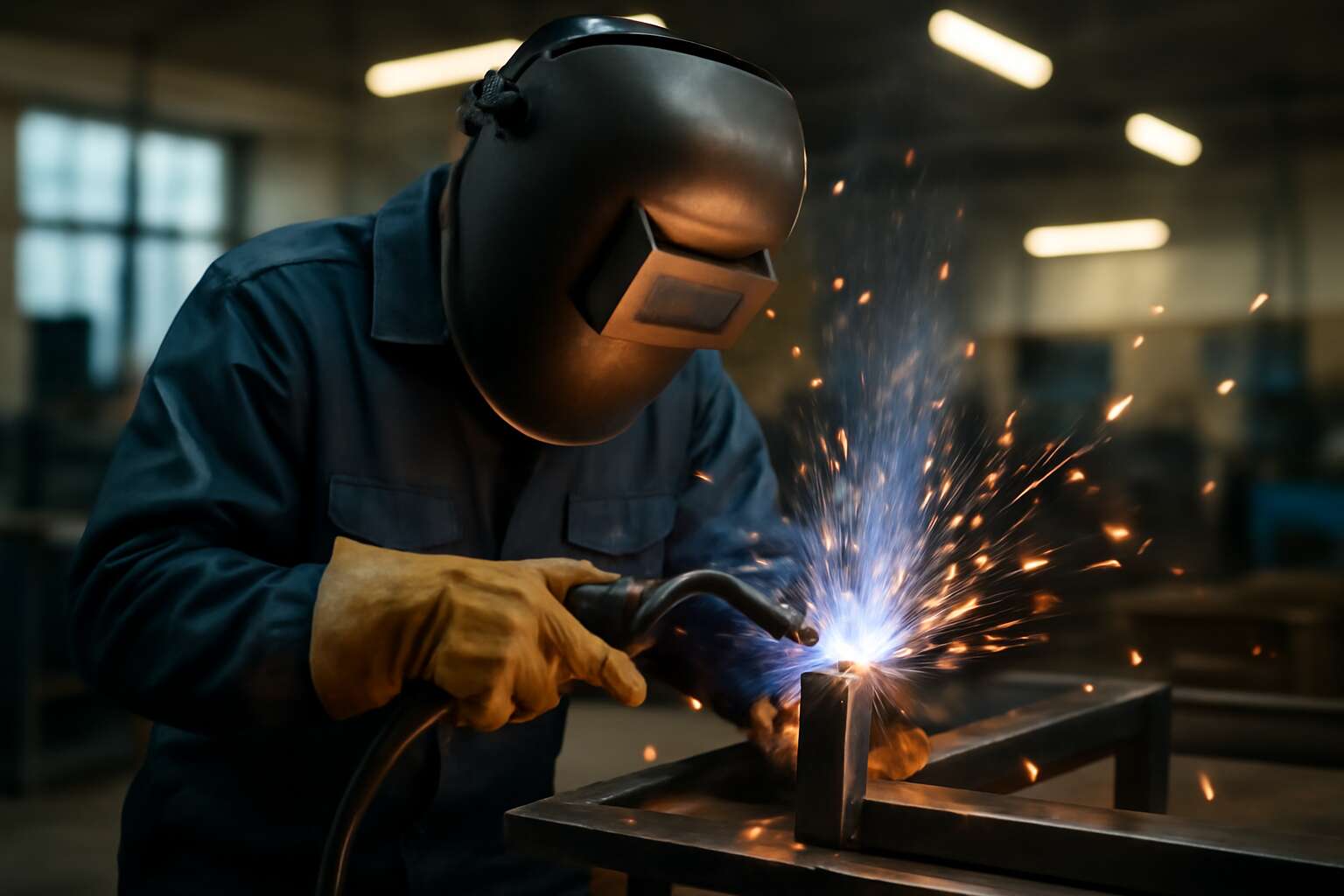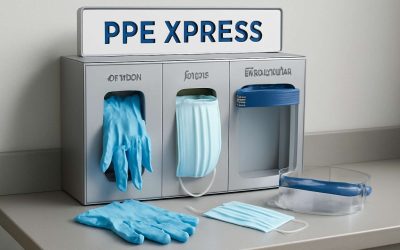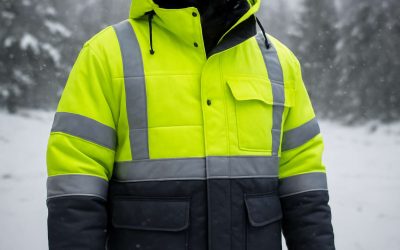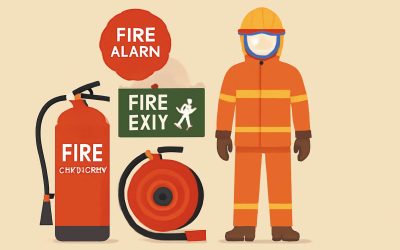Essential Personal Protective Equipment for Welders
Welding Helmets and Face Shields – Types, features, and safety standards
Within the realm of safety equipment welding, the importance of protective gear cannot be overstated—yet, it’s astonishing how many welders overlook the nuanced distinctions that define optimal safety. Welding helmets and face shields serve as the frontline defense against the searing glare and molten sparks that characterize this craft, transforming the hazardous into the manageable. The spectrum of options available is broad, ranging from traditional passive helmets to advanced auto-darkening variants, each imbued with features tailored for maximum safety and comfort.
Modern safety equipment welding emphasizes compliance with rigorous safety standards, such as those outlined by international organizations like ANSI and EN. These standards ensure that each helmet or face shield provides effective protection against ultraviolet and infrared radiation, while also resisting impact and heat. For those seeking precision, features like adjustable sensitivity, variable shade settings, and lightweight construction enhance both safety and endurance. Understandably, choosing the right gear directly correlates with a welders’ ability to perform with confidence, knowing their safety equipment welding is not just a necessity but a strategic advantage.
Protective Gloves – Materials, styles, and protection levels
In the realm of safety equipment welding, the significance of protective gloves cannot be overstated. These vital barriers shield welders from the relentless assault of heat, sparks, and molten metal, transforming hazardous moments into manageable tasks. The choice of gloves is as crucial as selecting the right helmet, for they are the first line of defense against potential injuries.
Crafted from a variety of materials, welding gloves range from supple leather to high-tech heat-resistant composites. Each material offers unique protection levels, tailored to specific welding applications. For instance, heavy-duty leather gloves provide unparalleled impact resistance, while specialized heat-resistant gloves are essential when working with high currents or intense temperatures. Styles vary from traditional mitts to more flexible, form-fitting designs that allow for dexterity without compromising safety.
Understanding the nuances of safety equipment welding means recognizing that not all gloves serve the same purpose. Some gloves feature reinforced palms and fingertips for added durability, while others incorporate flame-resistant linings for extended comfort and safety during prolonged use. Whether you’re welding in industrial settings or intricate art projects, selecting the appropriate gloves ensures that safety remains uncompromised, allowing welders to work with confidence and precision.
Welding Jackets and Aprons – Materials suited for different welding processes
Welding jackets and aprons are the silent guardians of every craftsman’s arsenal, yet their importance often slips into the shadows of more glamorous safety equipment welding. As sparks dance and molten metal flows, these protective layers serve as a formidable barrier against heat, splatter, and potential burns. The right materials can turn a hazardous moment into a brief, manageable spark rather than a devastating injury.
Choosing the perfect welding jacket or apron depends heavily on the specific welding process at hand. For high-temperature applications like arc welding or plasma cutting, flame-resistant fabrics such as leather, treated cotton, or specialized synthetic composites are vital. These materials withstand the intense heat and prevent embers from igniting or penetrating through protective layers.
In South Africa, where diverse welding environments demand adaptability, selecting the right safety equipment welding is crucial. Look for options that feature reinforced stitching, Kevlar lining, or leather overlays, especially if working with heavy-duty industrial welds. By merging durability with comfort, these protective garments ensure welders stay safe while maintaining maximum mobility in their craft.
Eye and Ear Protection – Safety glasses, earplugs, and earmuffs
In the relentless forge of welding, where sparks erupt like fiery fireworks and the cacophony of metal meeting metal fills the air, safeguarding one’s senses becomes an act of primal necessity. Eye and ear protection are often overlooked in the shadow of more conspicuous safety equipment welding, yet they form the critical barrier between a welder’s craft and irreversible injury. The eyes, delicate portals to perception, are vulnerable to intense ultraviolet radiation and flying debris, while the ears bear the weight of deafening noise that can cause permanent damage over time.
High-precision safety glasses with side shields and impact-resistant lenses serve as vigilant sentinels, warding off errant sparks and glare. Complementing this, ear protection—be it soft foam earplugs or sturdy earmuffs—mutes the relentless drone of industrial welding environments, shielding from noise-induced hearing loss. For those working in particularly noisy or prolonged settings, an integrated approach that combines both can mean the difference between safety and tragedy. Remember, in the realm of safety equipment welding, attention to these often underestimated elements underscores a commitment to professional integrity and personal well-being.
Advanced Safety Gear for Welding Environments
Respiratory Protection Equipment – Respirators, masks, and ventilation aids
In the high-stakes world of welding, breathing easy isn’t just a matter of comfort—it’s a matter of survival. Advanced safety gear for welding environments, especially respiratory protection equipment, is crucial for safeguarding workers from hazardous fumes and airborne particles. Respirators, masks, and ventilation aids aren’t just accessories; they are the frontline defense against inhaling dangerous contaminants. According to industry reports, poorly ventilated welding areas can expose workers to fumes containing harmful substances like hexavalent chromium and manganese, which can lead to long-term health issues.
Proper respiratory protection equipment must fit snugly and be designed to filter out these invisible threats. Options such as powered air-purifying respirators (PAPRs) and multi-gas masks provide superior protection, especially in confined or poorly ventilated spaces common in South African workshops. To ensure safety equipment welding standards are met, it’s essential to select gear that complies with local safety regulations and offers a comfortable yet effective seal against airborne hazards. After all, a welding job isn’t just about sparks and steel; it’s about breathing life into your work—safely.
Fire-Resistant Clothing – Standards and best practices
When it comes to safety equipment welding, fire-resistant clothing is an indispensable ally in the relentless pursuit of safety. Welding sparks and molten metal can ignite hazards in an instant, making protective garments more than just a precaution—they’re a lifeline. The standards governing fire-resistant clothing ensure that workers are shielded against intense heat, molten splashes, and potential flash fires, especially in high-risk environments found across South Africa’s bustling workshops.
Adhering to best practices means selecting garments made from durable, flame-retardant materials such as treated cotton or aramid fibers. These fabrics are engineered to resist ignition and self-extinguish, providing vital seconds for a worker to escape danger. To maximize safety, it’s recommended to follow the guidelines set by local safety regulations and industry certifications, which specify the minimum standards for flame resistance and durability.
For added protection, consider incorporating layered safety equipment welding, where multiple layers of fire-resistant clothing work in harmony to create a formidable barrier. An effective approach involves prioritizing comfort without compromising safety, ensuring that welders stay agile while fully protected in their craft. After all, in the world of welding, a single spark can turn into catastrophe—making fire-resistant clothing an essential component of your safety arsenal.
Safety Footwear – Steel-toe boots and slip-resistant soles
In the fiery world of welding, where sparks fly like tiny meteors and molten metal dances in the air, the importance of advanced safety gear cannot be overstated. Among the essential components of safety equipment welding, steel-toe boots stand as steadfast guardians, shielding feet from falling objects and heavy debris that are commonplace in bustling workshops. Their reinforced toes provide a formidable barrier against crushing injuries, an absolute necessity in high-stakes environments across South Africa’s industrial landscapes.
Equally vital are slip-resistant soles that grip the floor like a talisman, reducing the risk of slips and falls amid oily or wet surfaces. These safety shoes not only offer robust protection but also ensure that welders maintain their agility—vital when maneuvering around intense heat and dangerous tools. When combined with comprehensive safety equipment welding protocols, such footwear transforms a workspace from a potential hazard zone into a fortress of safety.
- Enhanced durability for long shifts in rugged conditions
- Protection against punctures and electrical hazards
- Comfort features that prevent fatigue during demanding tasks
In this realm of molten metal and radiant sparks, choosing the right safety footwear is a strategic move—an invisible shield that empowers welders and keeps their focus sharp on the craft at hand. The right pair of boots, combined with other safety equipment welding, creates a seamless armor of protection, turning a dangerous job into a safer, more confident pursuit.
The Importance of Proper Safety Equipment Maintenance
Regular Inspection Procedures – How to check for damage and wear
In the shadowy realm of welding, safety equipment welding is not merely a precaution—it is a lifeline woven into the very fabric of craftsmanship. Yet, even the most formidable gear can become a silent assassin if neglected. Regular inspection procedures reveal the unseen scars of wear and damage—cracks in the helmet’s visor, frayed glove seams, or compromised fire-resistant fabric—that threaten to betray the unwary.
A meticulous eye must peer into every crevice, every stitch, and every weld seam of your safety equipment welding. This vigilance guards against the creeping decay that erodes integrity and endangers lives. To ensure unwavering protection, consider a simple yet essential checklist:
- Check for cracks or distortions in the helmet or face shield
- Inspect gloves for tears or thinning materials
- Examine the integrity of fire-resistant clothing for burns or holes
In this dark dance with molten metal, the true safeguard lies in the relentless pursuit of maintenance, turning routine checks into a ritual of survival.
Cleaning and Storage Tips – Extending lifespan and ensuring safety
In the realm of welding, where sparks dance and shadows whisper, the longevity and reliability of safety equipment welding hinge on meticulous maintenance. Proper cleaning and careful storage are the silent guardians that extend the lifespan of your gear, ensuring it remains a steadfast shield against danger. Neglect can turn our protective allies into fragile relics, vulnerable to the relentless march of time and wear.
To preserve their integrity, always clean safety equipment welding after each use, removing dirt, grime, and residual metal particles that can degrade materials. Store gear in a cool, dry place away from direct sunlight, which can weaken fire-resistant fabrics and other sensitive components. Consider investing in protective covers or shelving to prevent accidental damage. An ordered environment not only prolongs the life of your safety equipment welding but also ensures immediate readiness for any weld.
In the twilight of welding’s fiery ballet, a disciplined approach to maintenance transforms routine care into an act of safeguarding lives. Remember, the true magic lies in treating your safety equipment welding as a living extension of your craft—cherished, vigilant, and forever prepared.
Replacement Guidelines – When and how to replace safety gear
Safety equipment welding is not a set-it-and-forget-it aspect of your work. Over time, even the most durable gear can deteriorate, compromising your protection. Regular maintenance is essential, but knowing when to replace safety gear can be even more critical. Worn-out helmets, damaged gloves, or frayed fire-resistant clothing diminish your safety and increase risk. It’s vital to adhere to replacement guidelines to ensure your safety equipment welding remains reliable.
Typically, safety equipment welding should be replaced if it shows signs of damage, such as cracks, tears, or compromised materials. Manufacturers often specify lifespan estimates—helmets might need replacement every 5 years, while gloves should be checked after heavy use. Remember, deterioration isn’t always visible; frequent inspections help identify hidden weaknesses. Incorporating a routine replacement schedule not only maintains safety standards but also enhances productivity, preventing avoidable accidents caused by equipment failure.
- Inspect your safety equipment welding thoroughly after each use.
- Replace any gear with visible damage or signs of wear.
- Follow manufacturer guidelines for lifespan and replacement intervals.
- Prioritize high-risk gear like helmets, gloves, and fire-resistant clothing.
Ultimately, understanding when and how to replace safety gear ensures that safety equipment welding continues to serve as a resilient barrier against harm. It’s a small investment that pays dividends in safety, efficiency, and peace of mind on every job site.
Safety Standards and Certifications for Welding Equipment
Understanding Industry Certifications – ANSI, OSHA, ISO standards
In the realm of safety equipment welding, understanding industry certifications acts as a compass, guiding professionals through a labyrinth of standards designed to safeguard lives and enhance productivity. Certifications such as ANSI, OSHA, and ISO are not mere bureaucratic labels; they embody the collective commitment to excellence and safety in welding environments. These standards serve as the silent guardians ensuring that every piece of safety equipment welding meets rigorous criteria, from durability to functionality.
For instance, OSHA (Occupational Safety and Health Administration) enforces strict regulations that mandate protective gear to withstand the intense conditions of welding jobs. Meanwhile, ISO standards promote global consistency, ensuring safety equipment welding adheres to international benchmarks, fostering a safer workplace regardless of borders. Understanding these certifications is akin to wielding a magic talisman—empowering workers and employers alike to forge ahead with confidence and security.
To navigate this intricate landscape seamlessly, many experts recommend following a comprehensive list of industry standards, such as:
- Ensuring safety equipment welding complies with ANSI Z87.1 for eye and face protection
- Verifying fire-resistant clothing meets ISO standards for flame retardancy
- Confirming respiratory protection is certified under OSHA respiratory standards
In this enchanted dance of metal and flame, certifications become the invisible armor, transforming raw materials into tools of both creation and protection—an essential for every welding professional committed to safety and excellence.
Choosing Certified Equipment – How to verify authenticity and safety compliance
In the intricate dance of sparks and steel, the true armor of a welding professional lies not just in skill but in the integrity of safety equipment welding. With the rising stakes of industrial accidents, verifying the authenticity and safety compliance of your gear becomes an act of both vigilance and conviction. As regulations tighten and standards evolve, understanding how to authenticate certified safety equipment welding is paramount. It’s a reassurance that every piece, from helmets to gloves, adheres to rigorous standards, providing a fortress against hazards.
One crucial step involves scrutinizing certification labels—look for markings indicating compliance with recognized standards such as ANSI Z87.1 for eye protection or ISO flame retardancy benchmarks. To streamline this process, consider an ordered approach:
- Inspect the manufacturer’s documentation for certification proof.
- Verify the certification authority’s legitimacy—reputable bodies like ANSI, OSHA, and ISO are trustworthy benchmarks.
- Cross-reference the product details with official certification databases or manufacturer websites.
This methodical verification ensures that your safety equipment welding not only meets but exceeds industry expectations, transforming your gear into a silent guardian amidst the chaos of welding environments. Such diligence fosters a culture of safety, empowering workers to operate with confidence while safeguarding their lives.
Regulatory Requirements – Legal obligations for welding safety gear
In the bustling world of welding, strict adherence to safety standards isn’t just a recommendation—it’s a legal obligation. South African regulations mandate that all safety equipment welding meet specific certifications to protect workers from the inherent risks of the trade. Ignoring these standards can lead to severe penalties and, more critically, compromised safety. Ensuring your gear aligns with recognized certifications like ANSI, OSHA, or ISO isn’t just about compliance; it’s about safeguarding lives.
Regulatory requirements for welding safety gear are designed to set a uniform bar for quality and reliability. These standards cover everything from eye protection to fire-resistant clothing, establishing benchmarks that manufacturers must meet. Verification often involves scrutinizing certification labels and cross-referencing product details with official databases. This process ensures that your safety equipment welding is authentic and effective, reducing the likelihood of accidents in high-risk environments.
Part of the legal framework includes maintaining documentation and ensuring that all safety gear used in industrial settings is properly certified. This not only aligns with South African health and safety laws but also fosters a culture of accountability. When safety equipment welding adheres to these standards, it becomes more than just gear—it transforms into a silent guardian, empowering workers to perform their tasks with confidence and peace of mind.
Best Practices for Using Welding Safety Equipment
Proper Fit and Comfort – Ensuring safety without sacrificing mobility
In the realm of welding, where sparks fly and shadows dance, the true magic lies in the harmony between safety and agility. Ensuring that your safety equipment welding fits snugly yet comfortably is not just a matter of compliance—it’s an art form that preserves mobility and sharpens focus. When gear fits properly, welders can perform intricate maneuvers without feeling encumbered, turning safety from a burden into an extension of their craft.
Achieving this delicate balance involves meticulous attention to fit and comfort. Adjustable straps, breathable materials, and ergonomic design are the silent guardians that prevent discomfort and distraction. To streamline the process, consider an ordered approach:
- Assess the fit around critical areas—face, hands, and feet.
- Ensure that protective gear does not restrict movement or cause pressure points.
- Test mobility through typical welding motions to confirm comfort.
This way, safety equipment welding remains effective while allowing welders to maintain full control over their work, ensuring maximum safety without sacrificing the fluidity of motion.
Training and Safety Protocols – Education for effective use
In the bustling world of welding, where sparks fly faster than gossip at a village fête, proper training and strict safety protocols aren’t just recommended—they’re downright essential. Without a solid understanding of how to wield safety equipment welding correctly, even the most seasoned artisan can find themselves in a fiery predicament. The secret lies in comprehensive education that goes beyond mere compliance; it’s about fostering a culture of safety that becomes second nature.
Effective training programs emphasize the importance of knowing your safety gear inside out—how to don and doff it properly, recognize signs of wear, and understand its limitations. Incorporating hands-on demonstrations and real-world scenarios helps welders internalize these lessons, turning safety protocols into instinct. Remember, a well-trained welder who respects their safety equipment welding is less likely to overlook critical steps—saving time, money, and possibly limbs!
To reinforce good practices, an unordered list of key safety procedures can be invaluable:
- Always inspect your safety equipment welding before use for defects or damage.
- Follow manufacturer guidelines precisely for fitting and maintenance.
- Maintain a clean, clutter-free workspace to prevent accidents.
- Engage in regular refresher courses to stay updated on safety standards.
It’s this diligent adherence to safety protocols that transforms welding from a hazardous task into a showcase of skill and professionalism. Remember, safety equipment welding isn’t just for compliance; it’s the armor that keeps welders safe and their craft pristine in the face of fiery adversity!
Emergency Preparedness – Preparedness plans and safety drills
Welding safety isn’t just about donning the right gear—it’s about cultivating a mindset of preparedness that can mean the difference between a controlled environment and a costly accident. In South Africa’s dynamic industrial landscape, where safety equipment welding plays a pivotal role, having a robust emergency preparedness plan is non-negotiable. A single spark can ignite chaos if the proper safety procedures aren’t in place.
Effective safety equipment welding requires more than just equipment; it demands regular safety drills that simulate potential emergencies. These drills reinforce quick thinking and proper responses, ensuring that every team member knows their role when the unexpected occurs. Incorporating structured safety procedures such as evacuation routes, fire suppression protocols, and first aid response can significantly bolster your resilience in a crisis.
- Ensure all personnel are familiar with the location and proper use of fire extinguishers and emergency exits.
- Conduct periodic safety drills that mimic real-life hazards encountered during welding operations.
- Maintain clear communication channels for reporting hazards or incidents immediately.
By embedding these practices into your daily routine, you lay the groundwork for a safer workplace. Remember, the true strength of safety equipment welding lies in preparedness—an armor that safeguards lives and preserves the integrity of your craft in the face of unforeseen adversity. In South Africa’s vibrant welding industry, a proactive approach to safety is not only wise but imperative for enduring success.
Trends and Innovations in Welding Safety Equipment
Smart Safety Gear – Technologies integrating sensors and monitoring
Advancements in welding safety equipment are transforming the landscape of industrial craftsmanship, where precision and protection intertwine with technological innovation. The emergence of smart safety gear—equipped with sensors and real-time monitoring—represents a paradigm shift that enhances both safety and efficiency. These intelligent systems can detect hazardous conditions, such as excessive heat or harmful fumes, alerting welders instantly and preventing accidents before they escalate. Integrating wearable technology not only fortifies safety protocols but also fosters a culture of proactive vigilance in South African workshops.
Innovative safety equipment welding now often includes features like biometric sensors that track vital signs, ensuring early detection of fatigue or distress among operators. The fusion of Internet of Things (IoT) connectivity with safety gear facilitates seamless data sharing, enabling safety managers to oversee multiple workstations with unprecedented oversight. Such advancements exemplify how industry leaders are embracing innovation, making safety equipment welding not just a regulatory requirement but a dynamic shield against occupational hazards. As these technologies evolve, the focus remains on creating safer, more resilient environments where skilled welders can thrive without compromise.
Lightweight and Ergonomic Designs – Enhancing mobility and comfort
In the ever-evolving realm of safety equipment welding, the trend toward lightweight and ergonomic designs is nothing short of revolutionary. No longer do welders need to wrestle with clunky, cumbersome gear that hampers mobility and drains energy. Today’s safety equipment welding boasts sleek, feather-light structures that feel like a second skin—allowing welders to move freely, work longer, and stay comfortable under pressure. This seamless blend of comfort and protection ensures that safety doesn’t come at the expense of agility.
Innovators are harnessing advanced materials such as carbon fiber composites and breathable fabrics to craft gear that is both durable and flexible. These innovations are especially vital in South Africa’s diverse work environments, where rugged terrains and tight spaces demand gear that adapts to the task at hand. Additionally, ergonomic features like adjustable straps, padded support, and streamlined profiles reduce fatigue and enhance focus, ultimately boosting productivity and safety.
- Enhanced mobility for intricate welding tasks
- Reduced strain and fatigue during long shifts
- Improved overall safety compliance without sacrificing comfort
In a nutshell, the rise of lightweight and ergonomic safety equipment welding signifies a paradigm shift—making safety gear not just a regulatory checkbox but a practical, comfortable tool for every welders’ arsenal. When gear feels like an extension of your body, safety becomes instinctive—turning occupational hazards into relics of the past.
Eco-Friendly Materials – Sustainable options in safety gear
In a world increasingly conscious of our environmental footprint, the evolution of safety equipment welding is taking a profound turn toward eco-friendly materials. The industry’s shift is no longer solely about protecting welders but also about safeguarding the planet. Sustainable options like recycled plastics, biodegradable fabrics, and non-toxic dyes are becoming commonplace in the manufacturing of safety gear. These innovations ensure that protective equipment does not contribute to environmental degradation, aligning safety with responsibility.
Innovators are exploring bio-based composites and natural fibers, which offer durability without sacrificing ecological integrity. For instance, some companies now incorporate hemp or bamboo into their designs—materials that are renewable, lightweight, and inherently breathable. This not only enhances comfort but also reduces waste and energy consumption during production.
In South Africa’s rugged landscapes, where safety equipment welding must withstand harsh conditions, these eco-friendly materials prove invaluable. They stand as a testament to a future where safety, sustainability, and human well-being are intertwined—an essential evolution in occupational safety.




0 Comments